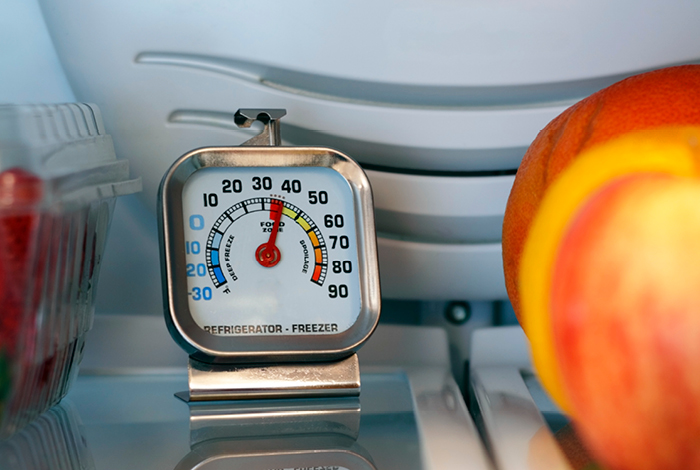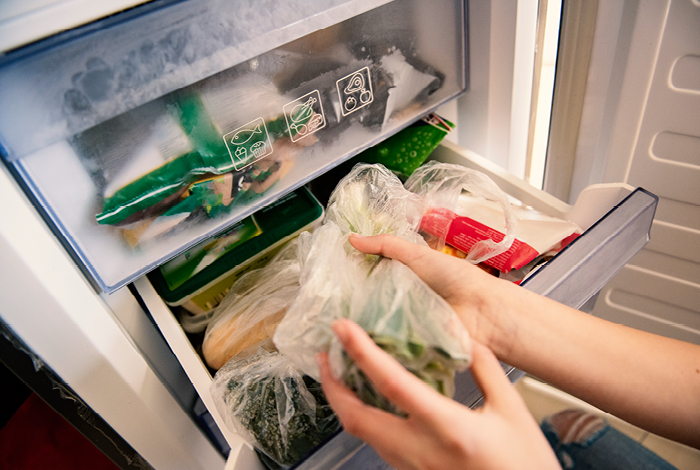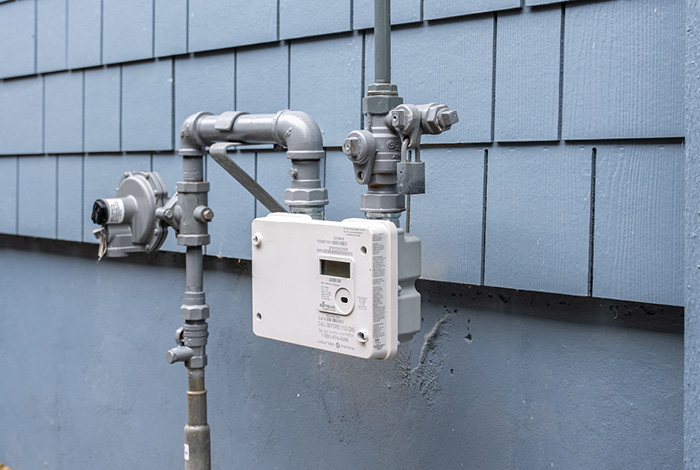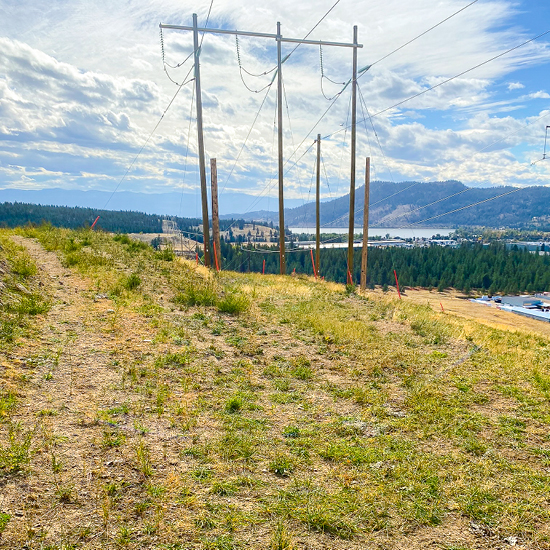How to store and maintain food during an outage
March 13, 2017
Updated November 13, 2024
In Southern B.C., we can take our fridges for granted—well, most of the time. There are times when weather, wildlife and wear can take a toll on electricity infrastructure. So, it’s important to be prepared for unexpected power outages. Part of being prepared means knowing how to properly store and maintain food when the power goes out.
How do you keep your food safe during an outage?
We talked to Karine Lawrence, food scientist and owner of Sirocco Food + Wine Consulting, for answers about food safety. Karine cares about safe food storage and handling practices in industrial and food service settings. She’s also informed about emerging foodborne pathogens that can cause outbreaks.
Passionate about food safety and the outdoors, Karine wants to avoid food waste while keeping her friends and family safe. Her top recommendation is to be ready and informed before the power goes out. That means practicing safe food handling techniques. “Your food has a better chance of staying safe during an outage if it’s been safely handled at all times and stored at a safe temperature,” she explained.

What temperature should your fridge be?
Answer: Set your fridge at 4 °C and your freezer at -18 °C.
For safe food storage, it’s ideal to set your fridge at 4 °C and your freezer at -18 °C. Karine found studies that show an alarming number of fridges are too warm. In 2006, Food Safety Magazine reported that 20 per cent of domestic and commercial refrigerators operate at a temperature of greater than 10 °C (50 °F). This year, Food Safety News quoted a Dutch study published in the International Journal of Food Microbiology saying that “the temperatures of 534 refrigerators on the bottom shelf showed they varied from −1 °C to 17 °C (30.2 to 62.6 °F), with two-thirds showing 6 °C (42.8 °F) or lower.”
Failing to keep food at a proper temperature could lead to the growth of illness-causing bacteria like salmonella, listeria and E. Coli. Overloading an older appliance with hot or warm food may also present food safety risks, as it may take longer for food to reach 4 °C.
How can you tell if your fridge is cold enough?
Answer: Check your fridge’s built-in thermometer.
You can tell your fridge is cold enough by checking the built-in thermometer to make sure it reads 4 °C. If your fridge doesn’t have a built-in thermometer, purchase an appliance thermometer online or at your local retail or home supply store. They’re an inexpensive and accurate way to monitor your fridge’s temperature.
How can you keep your fridge cold during an outage?
Answer: Keep the door properly sealed and avoid unnecessary browsing.
Keep your fridge cold by avoiding unnecessary browsing during an outage. A properly sealed fridge should maintain food safely for four hours (sometimes even longer), so long as the door is kept closed. Food also remains safe at room temperature for up to two hours, which is about as long as you should put out appetizers during a cocktail party but longer than you should put out potato salad at a picnic or BBQ on a hot day.

Tips to manage food before, during and after and outage
Karine also offered these tips to help keep food safe before, during and after an unexpected power outage:
Before a power outage
- Keep a few days’ worth of ready-to-eat foods that do not require cooking or cooling.
- Keep your fridge clean. Wipe spills and disinfect surfaces immediately.
- Defrost and clean your freezer regularly.
- Make sure the seals around your fridge or freezer door are in good repair.
- Ensure that raw meat/fish are stored away from ready-to-eat food and any drips are contained.
- Store leftovers in clean, small containers and cool promptly.
- Avoid leaving food on the kitchen counter for more than two hours.
- Keep ice packs or a block of ice in your freezer.
- Check your fridge temperature periodically.
- Have a back-up generator if you live in an area at high risk for outages, such as a heavily forested area.
During a power outage
- Record the time the power went out.
- Move everything to the coldest part of the fridge: in the back, high-up and close together.
- Move your ice packs or ice block from the freezer to the fridge. (Do not use ice or snow from outside, this can contaminate your food).
- Keep your fridge and freezer door closed as much as possible to keep the cold air in.
- For a prolonged outage, transport food carefully in a cooler to a working fridge.
After a power outage
- Check the fridge temperature when the power is restored.
- Inspect the food and cook any thawed food that is still at a safe temperate to an internal temperature of 74 °C.
- Do not refreeze thawed food.
- Clean and sanitize the fridge and wipe down the inside of the door with disinfecting cleaner.
- If the outage lasts for more than four hours, pay special attention to at-risk foods like yogurt, milk and raw meat.
It’s important to be prepared for an unexpected power outage. If you want to find out more about food safety, take a look at The Canadian Food Inspection Agency’s recommendations for handling food during a power outage.
 | Karine Lawrence, Founder and Principal Consultant of Sirocco Food + Wine Consulting is based in Kelowna and has worked for the wine and food industry for over 20 years, bringing expertise in food safety, sensory/consumer science and regulatory compliance. Since the inception of Sirocco Food + Wine Consulting in 2014, she has provided research and consulting services to food and wine industry stakeholders in Canada and the United States. She is a Lead Food Safety Preventive Control and HACCP Instructor, a Certified Canadian HACCP specialist and SQF Trainer & Consultant. Karine holds a Master of Food Science degree as well as a diplôme d’ingénieur (an engineering degree specializing in agri-food industries). |



